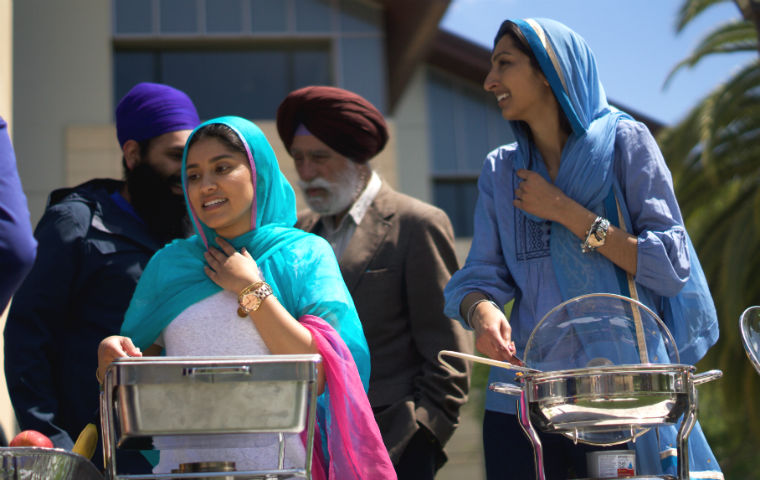
Celebrating An Age-old Tradition
Sikh Student Association at Santa Clara University hosts a meal
Nanki Bhullar
The carpets are rolled out, heads are covered with scarves, and the steaming hot north Indian vegetarian meal is served to all who need it by volunteers. This practice is known as “langar,” a 500-year-old anti-segregation movement rooted in the Sikh tradition.
In an effort to create a space for Sikhs on campus, as well as invite the campus community to share in our traditions, student members of the Sikh Student Association (SSA) at SCU organized a langar on campus on Thursday, April 20. Approximately 200 SCU community members shared langar— which translates to “the anchor” and has the practical meaning of a “free kitchen open to all”—together while sitting on the ground.
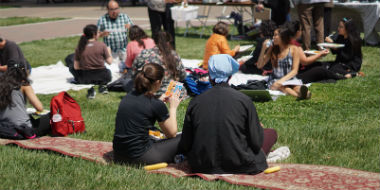
Though to outsiders, the custom may simply appear to be a standard communal meal, insiders know that the symbolism and reasoning underlying the practice goes much deeper than that. Langar was established by Guru Nanak Dev, the first guru of the Sikhs. It was later institutionalized by Mata Khivi, the wife of the second guru. While Guru Nanak’s intentions in creating this practice were to disrupt social hierarchies and hegemonies, Mata Khivi helped set precedence for langar as an embodiment of humanitarian service and social equality.
Consistent with the ideals of resistance against institutional oppression, all who partake in langar enjoy their meal while sitting together—not on chairs, but rather, on the floor. This seating helps to symbolize, as literally as possible, the inherent and unquestionable equality of all beings. The practice of langar is a resistance to those who seek to profit from patriarchy, classism, racism, anti-blackness, and sexism.
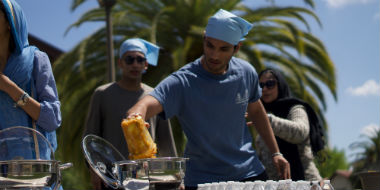
The north Indian meal is cooked and served by volunteers 24/7 in gurdwaras, Sikh temples, worldwide. The Darbar Sahib in Punjab, India (commonly called “the Golden Temple”) feeds over 100,000 individuals every day—and no person is turned away.
As the co-founder and former president of the SCU Sikh Student Association, I desired to bring the Sikh radical spirit of service, political resistance, and social engagement to my campus community. I wished to demonstrate to other organizations at SCU, who also advocate for marginalized communities, that the SCU Sikh Student Association—along with all Sikh Americans—stand in solidarity with those movements and actions which protect the rights of and heighten the voices of the silenced.
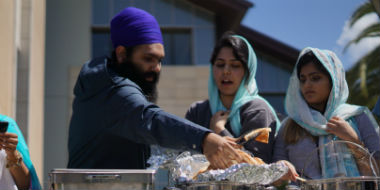
The Sikhs, who themselves have experienced a long history of marginalization, discrimination, and genocide in both India and the diaspora, have not simply developed this revolutionary spirit as a result of their circumstances. Sikhism in fact was founded upon the principles of speaking up for the voiceless and challenging the prevalent gender-based violence and oppression, class-based hierarchy, and religious-based discrimination occurring in northern India at the time and later on.
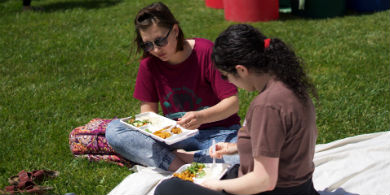
Langar at Santa Clara University was hopefully a significant milestone in the SSA’s role in helping further Santa Clara University’s mission to educate men and women for others to “cultivate knowledge and faith to build a more humane, just, and sustainable world.” As the primary organizer for this event and as a recent alumna of Santa Clara University, I hope that our Sikh Student Association achieves its place among and becomes further integrated into the social justice fabric of this university and, in this way, honors the original vision of Guru Nanak’s conceptualization of the Sikh way of life.